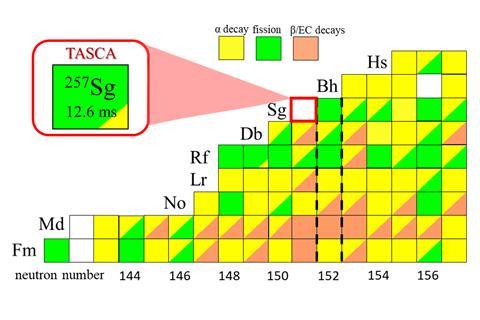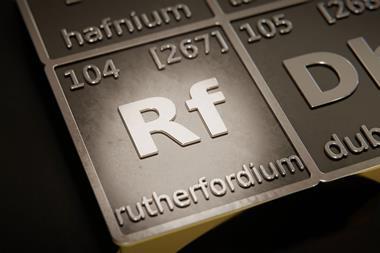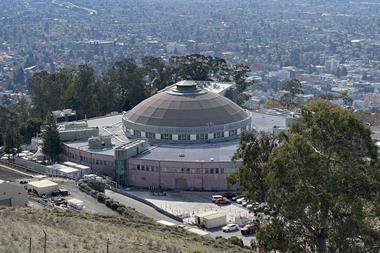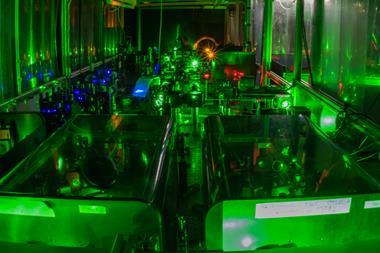An international team lead by researchers in Germany has discovered a new seaborgium isotope. The experiment, which was carried out at the GSI/FAIR accelerator in Darmstadt, Germany, detected 22 nuclei of seaborgium-257. This brings the total number of known isotopes of the synthetic superheavy element seaborgium with atomic number 106 to 22.

Seaborgium-257 was produced by colliding a beam of chromium-52 with a thin layer of lead-206. The researchers detected 21 spontaneous fission decays of a seaborgium-257 nucleus, as well as one alpha decay, for a total of 22 nuclei. The half-life of the new isotope, situated just next to the enhanced neutron shell gap at 152, is 12.6 milliseconds.

Seaborgium was first discovered in 1974 when both a Russian team and a US one claimed to have produced the superheavy element by using two different sets of elements. While the Russian team, led by Yuri Oganessian, was first to claim the synthesis of the element, the US team’s experimental evidence was deemed stronger. This meant that the US team eventually chose the name for the new element and dubbed it seaborgium, after the team’s leader Glenn Seaborg, at that time the only living person to have an element named for him. Oganessian did get his just desserts though, when element 118 was named oganessian in his honour in 2016.
‘Our findings on seaborgium-257 provide exciting hints on the impact of shell effects on the fission properties of superheavy nuclei,’ stated Pavol Mosat from GSI/FAIR who was the study’s first author. ‘As one consequence, it is possible that the next lighter, still unknown isotope – seaborgium-256 – may undergo fission in a very short time range of one nanosecond to six microseconds.’
References
P Mosat et al, Phys. Rev. Lett., 2025, 134, 232501 (DOI: 10.1103/s7hr-y7zq)

















No comments yet